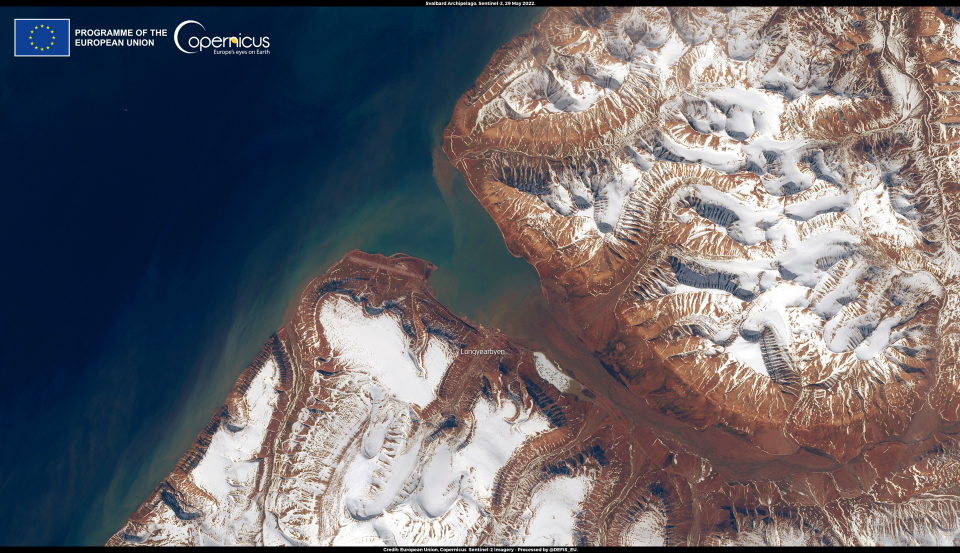Published on 31 May 2022
This image, acquired by one of the Copernicus Sentinel-2 satellites on 29 May 2022, shows the significant discharge of sediment into the Arctic Ocean due to melting snow and glaciers around Longyearbyen in the Svalbard archipelago in Norway.
The massive melting is caused by an ongoing heatwave in the Arctic. According to the Norwegian Meteorological Institute (see this tweet), on 28 May, at Akseløya, an island 60 km southeast of Longyearbyen, the temperature rose to 10.5°C, the highest value for the month of May in 46 years of observations. Additionally, according to the University of Liège's climatology laboratory (see this article), on the day of this image acquisition, the surface melting at the Svalbard archipelago reached a record high value for the end of May.
Data acquired by the Copernicus Sentinel satellites are used to detect changes in the earth's surface with great detail, even at northern latitudes, and monitor the melting of glaciers.
